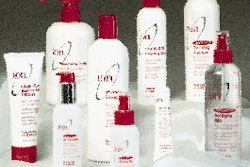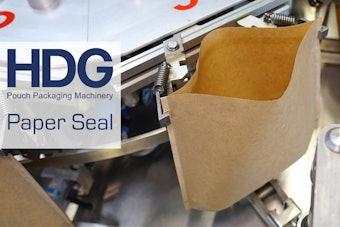A huge range of regionally branded consumer products may have to be reformulated or repackaged to come into compliance with new rules on product VOC emissions by the Environmental Protection Agency. VOCs are volatile organic chemicals that react with nitrogen oxides in the presence of sunlight to form ground-level ozone. Many of the big-time national brand names such as Lysol, Glass Plus, Windex, Pledge and Clairol already may be under the VOC limits for their product categories. That's because those products have been sold in California. That state's VOC limits essentially were adopted by the EPA in its final rule of Sept. 11, 1998. "We already comply with the California standards," says Terry Bedell, manager of environmental programs at The Clorox Co., Oakland, CA. "There is no need for us to repackage." In fact, some products, such as Finesse Touchable hair sprays from Helene Curtis, Chicago, IL, already carry label language saying they meet California and New York clean air standards. Even though the industry leaders seem to be in good "VOC shape", they will still have to add a "manufactured on" date to their labels. Many of them will also follow Helene Curtis's lead, adding "VOC compliance" label testaments to buff their environmental credentials. Chip Brewer, an executive with SC Johnson, Racine, WI, which makes Windex, Glade, Raid, Pledge and many other products affected by the VOC limits, thinks that regional brands will have the toughest time complying with the rule. Some will reformulate, others simply will eliminate the offending products from their lines. Some companies may repackage. One option is downsizing the container to comply with the VOC emissions limit. Some of the companies facing these decisions may be touchy about this dilemma. "No one can talk to you," was the response to my query from Sheila Lenihan, spokeswoman for Reckitt & Colman, Wayne, NJ, manufacturer of Lysol and other brands. "That's what's scary," admits Bruce Moore, an EPA official. "We don't know how the smaller companies are going to be affected." The EPA issued two rules on Sept. 11. One established VOC limits for 25 product categories, including household cleaning, personal care, household adhesives, and home and garden products. There are two compliance deadlines. Insecticides have until Dec. 10, 1999. All other products faced a Dec. 10, 1998 deadline. The second rule dealt with architectural coatings and paints. The compliance deadline, and its associated requirement for a "manufactured on" date on the label, is Sept. 11, 1999. There also must be a label notation about the product's VOC content. If the manufacturer makes a "recycled-content" claim, the label must specify what percentage of the product or package is post-consumer. One wrinkle in the paints/coating rule is that any product packaged in a container holding less than 1 L does not have to comply with the VOC limits. Ellen Ducey, an EPA official, does not think that paint companies will downsize their containers to avoid the VOC limits, however. A parallel provision in the consumer products rule affects products such as household glues sold in squeezable tubes smaller than 1oz. Companies that have a problem meeting the consumer products deadline can get a variance for up to five years for "extraordinary circumstances beyond reasonable control."
EPA caps VOCs in products
Manufacturers will be required to reformulate, repackage or retire some products. However, most national brands already comply.
Dec 31, 1998
Machinery Basics

How Can You Honor a Leader?
Induction into the Packaging & Processing Hall of Fame is the highest honor in our industry. Submit your leader to be considered for the Class of 2024 now through June 10th. New members will be inducted at PACK EXPO International in Chicago
Read More




















